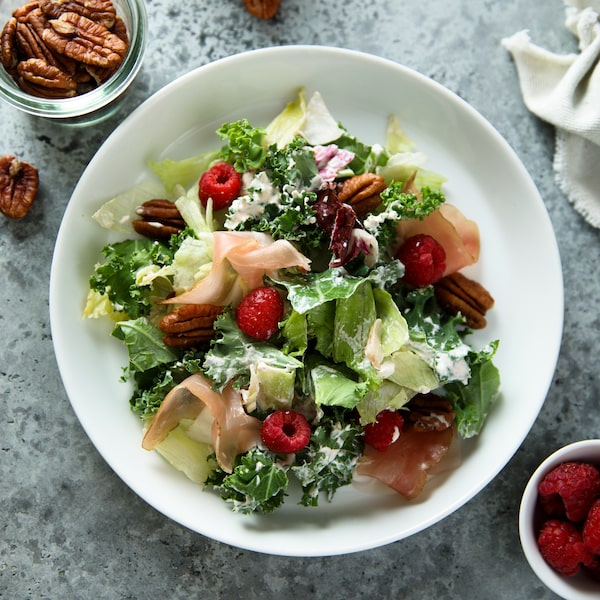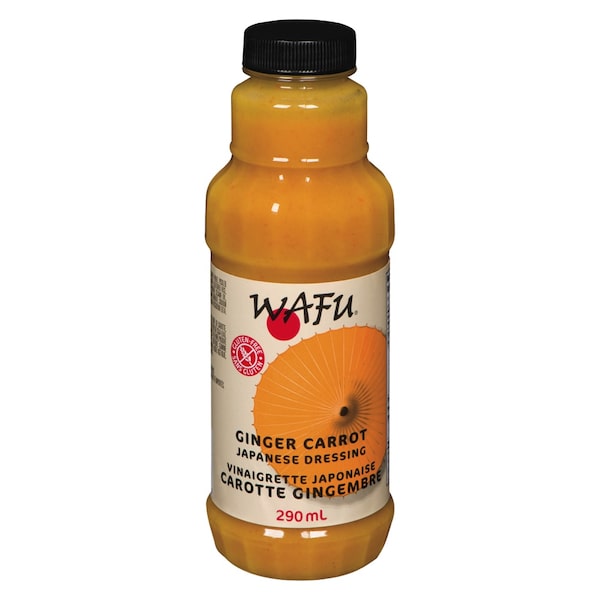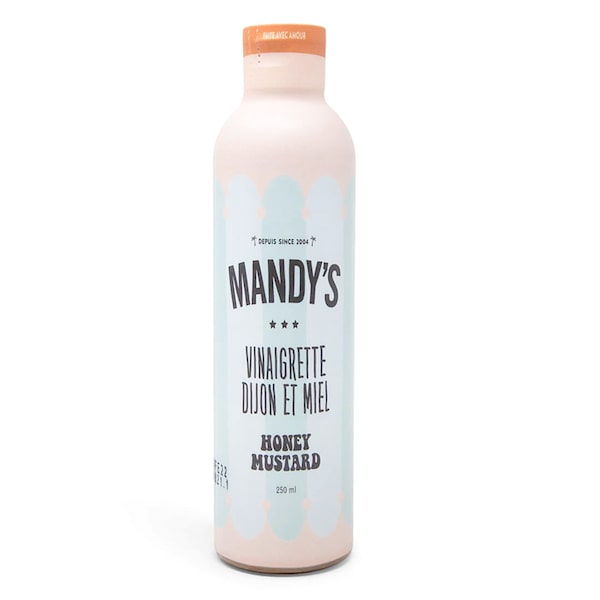
Mariha-kitchen/iStockPhoto / Getty Images
For too many years we’ve been whisking together our own salad dressing as if there weren’t an entire supermarket aisle dedicated to the stuff. Why buy store-bought, we thought, when we can make 20 different dressings using ingredients we already have on hand? And that’s how we ended up spending the better part of the past two decades drizzling balsamic vinegar and olive oil over our mixed field greens and goat cheese salads.
But you know what tastes even better than balsamic and arugula? Nostalgia. That’s where bottled salad dressings come in.
Salad days spent at favourite family spots such as the Olive Garden and Mandarin Restaurant may pluck at your heartstrings, but for me it was a visit to the Ponderosa Steakhouse. For special occasion dinners, my brothers and I would order the kid’s steak meals, which came with delicious foil-wrapped baked potatoes, plus a trip to the salad bar, and warm dinner rolls that my Bubbe would wrap in napkins and slide into her purse.
I remember the freedom of creating my own salad using various tongs and spoons at the glassy faux wood bar: I’d start with a medium mound of iceberg lettuce topped by a smaller mound of shredded carrot. The chickpeas were key, as were the alfalfa sprouts. Sometimes I added corn and sunflower seeds. But always, there was a crowning half-ladle of blue cheese dressing and a sprinkling of crunchy croutons. It was a perfect salad that owed absolutely everything to that chunky blue.
Be it French, Italian, Ranch, Thousand Islands or Catalina (which is basically French with an extra kick of ketchup), these days it seems like nothing but store-bought will do. In fact, a recent MarketWatch survey forecasted the growth rate for bottled salad dressings at almost 6.5 per cent over the next five years.
What’s the healthiest oil for salad dressings?
Around the same time as my circa-1980s Ponderosa salads, Renée’s, a homegrown Canadian brand, took the preservatives out of the jar and put their dressings in the refrigerated produce section at the supermarket. Now that, we all thought, is fresh. And it was. Some of us still enjoy Caesar salads using Renée’s Creamy Caesar on a weekly basis.
Another Canadian phenom, Mandy’s Salads, was popular in Quebec for more than a decade, before finally touching down in Toronto this spring. They sell signature dressings and likewise salads including one called The Fave, full of romaine, arugula, shredded carrot, corn, broccoli, avocado, baked pita chips, sunflower seeds and shaved parmesan – vaguely reminiscent of my childhood Ponderosa salads, but no blue. Here, the key is their Honey Mustard Dressing.
I recently bumped into Mandy Wolfe (the Mandy of Mandy’s) while enjoying a salad on their sunny Ossington Avenue patio and asked if she thought bottled salad dressings were back in style. Naturally, she said yes. “But in new ways,” she added. Wolfe said if you go back 20 or 30 years, you’re looking at red wine vinegar, vegetable oil and some sort of dried herbs on the grocery store shelf. “Now, there are so many different sweetening agents, acids, fresh ingredients, and oils we can use.” These days there are also more ways to enjoy salad dressings, from marinades to poke bowls and even as a dip.
“Salads are an easy and healthy go-to lunch for many of our customers, and with so many Canadians returning to the office and kids heading back to school this fall, we’re seeing growth in the category,” says Heather Fadali, vice-president of Loblaw brands product management and innovation. “We’re also seeing our line of No Name Simple Check salad dressings resonating with our customers because ingredient awareness is on the rise.”
Three recipes for those who truly appreciate a salad ‘with lots of stuff in it’
She says when searching for the new and the next, their product development team is always identifying emerging trends. “Right now we’re seeing health conscious consumers looking for the perceived health benefits that go along with ingredients like turmeric, ginger and black pepper,” Fadali says.
“There’s a time and a place for bottled salad dressing,” says Deborah Cohen, a registered dietitian who also happens to be my sister-in-law. She says there are certain dressings she would never buy because they’re too easy to make, like balsamic. “However, a store-bought creamy Caesar or ranch are better than anything I could ever make quickly. We need to get past our negative thoughts on what we traditionally think of as shelf-stable salad dressings, because there are newer ones made from natural ingredients that have unique flavours and are truly delicious.”
Four bottles of salad dressing to try

Wafu Ginger Carrot Dressing.Handout
Wafu Ginger Carrot Dressing: Full of carrot and pickled ginger, rice-wine vinegar and a touch of sugar, it also happens to be vegan.

Mandy's honey mustard dressing.Handout
Mandy’s Honey Mustard Dressing: A lusciously smooth texture with a great balance of sweet, salty – and a little zip. A great dip for appetizers, too.
Renée’s Poppy Seed Dressing.handout
Renée’s Poppy Seed Dressing: In the eighties, a spinach salad meant earthy leaves, canned mandarin, toasted almonds, red onion and a nice pour of this dressing. It remains undefeated.

PC Turmeric Ginger Vinaigrette.Handout
PC Turmeric Ginger Vinaigrette: The functional ingredient trend inspired PC’s latest salad dressing, which launched this summer and is selling well.